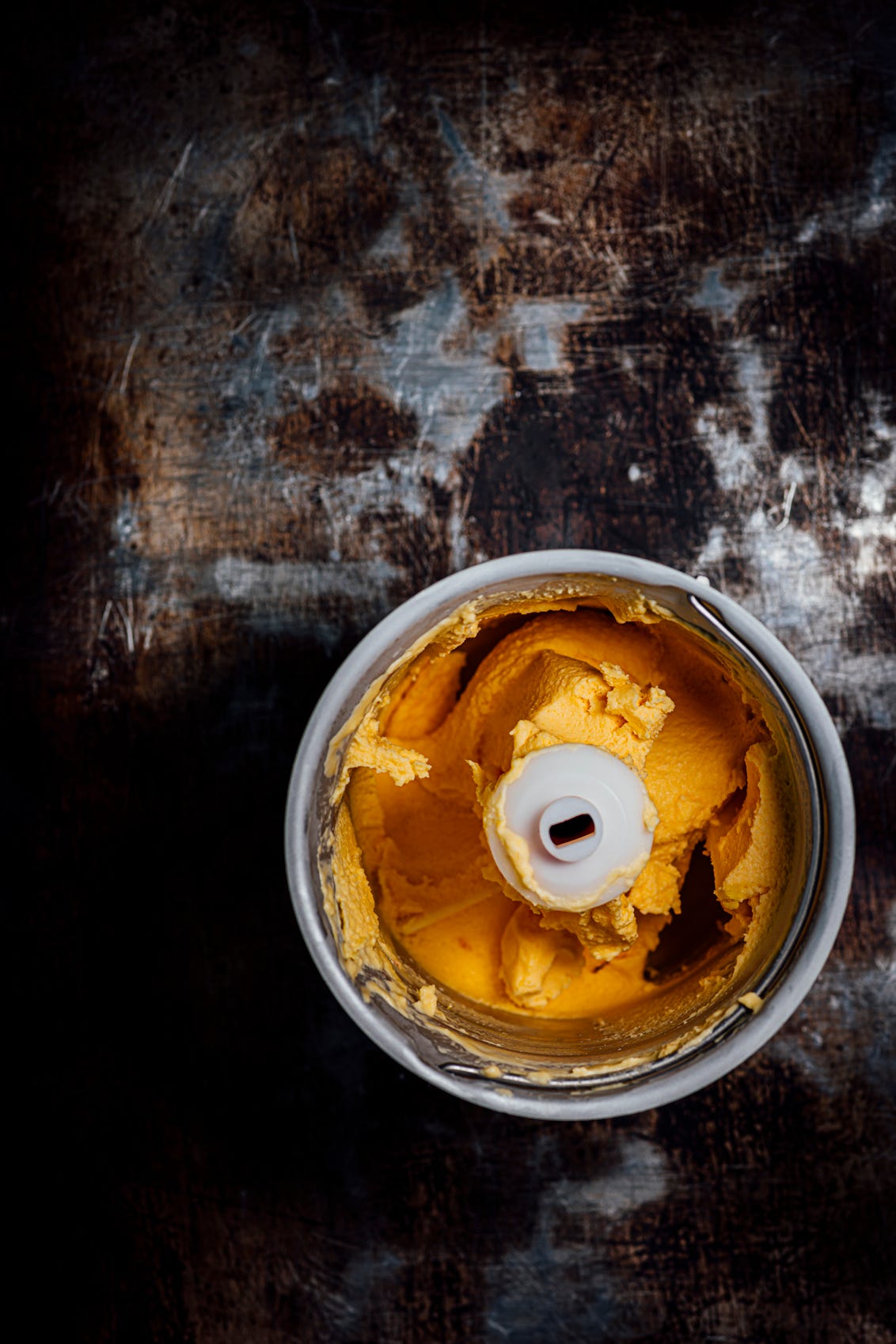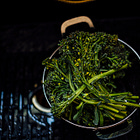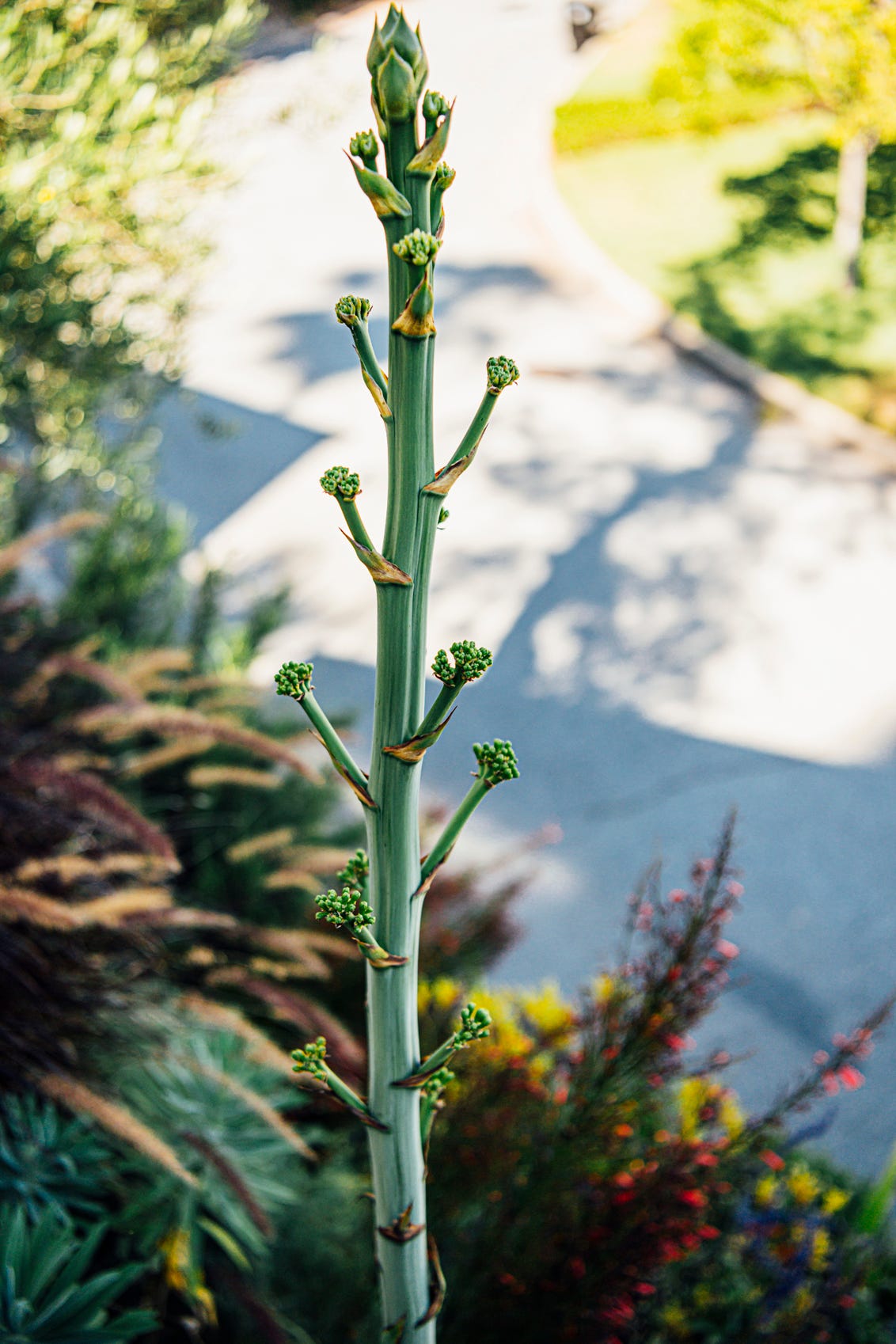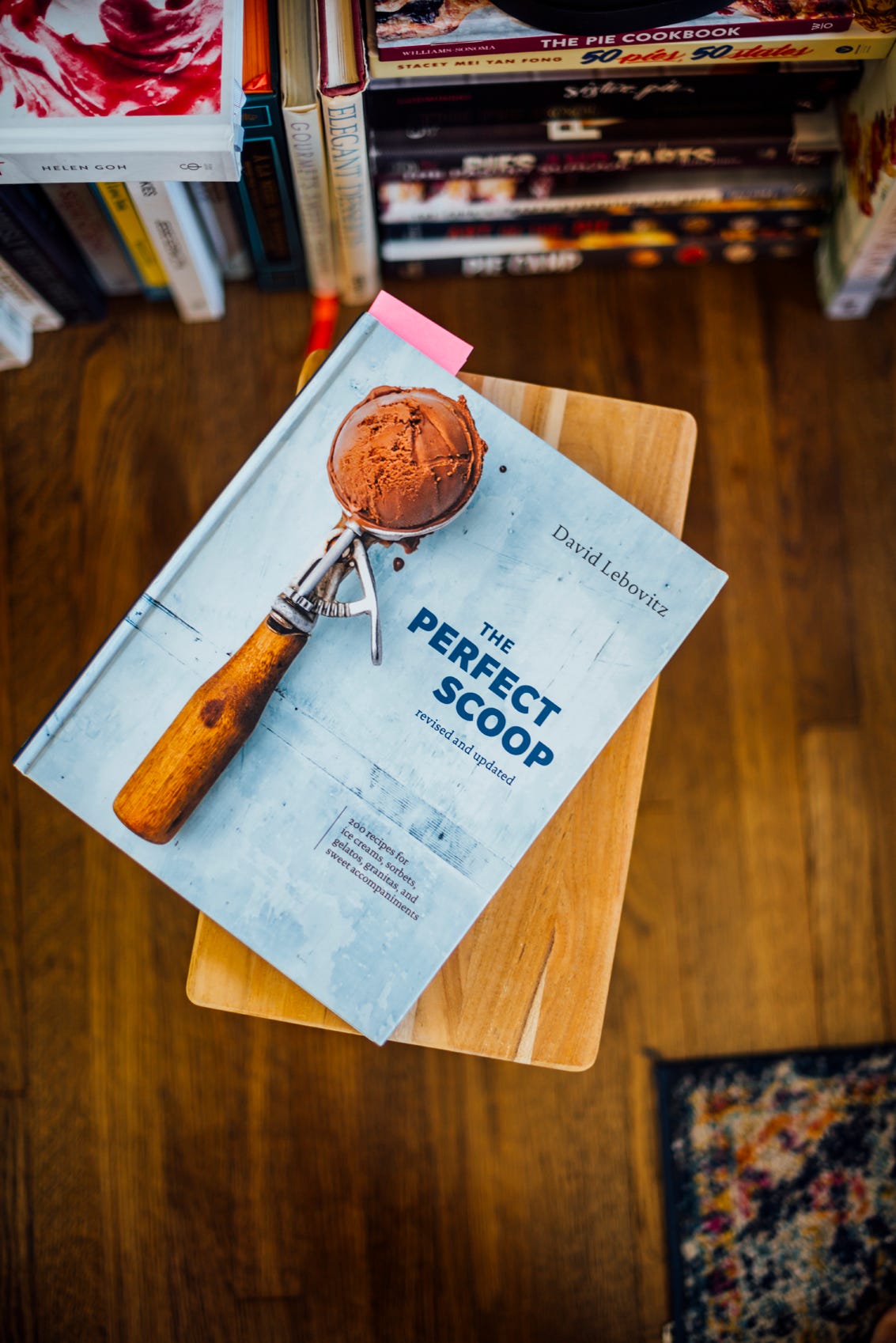Talking Ice Cream with David Lebovitz
The Art of Ice Cream Making According to David Lebovitz/Peach Elderflower Ice Cream
Before jumping into this exciting newsletter with one of my favorite food people, here’s our weekly news update.
The BBC Food Programme has an excellent episode titled “Feeding Your Brain: A User’s Guide”. The show dives into different aspects of how the food we eat affects the composition of our brains and the short and long-term impact on our mental health and well-being. It also gets into microbial flora and affects the stress hormone cortisol in humans. If you have some time, I highly recommend listening to this episode.
I went to San Francisco and visited my publisher, Chronicle Books. That day also randomly coincided with the day they received two early copies of my book. The copies were supposed to come in August, but this was an amazing surprise. They gave me one copy to bring back, and I had to hold back the tears and excitement. Despite this being my third cookbook, seeing Veg-Table in my hands for the first time was so emotional. Inside, I was a little terrified; what if it was just another book dummy 🤣 ?
Speaking of Veg-Table, you can go behind the scenes and get a sneak peek inside the book and learn more about it.
If you read my newsletter on Broccolini, you will appreciate this “not-a-broccolini” photo of my octopus agave flowering (the plant flowers before it dies 😭).
Burrata is being shunned now; it is fine to eat it, and you can still order it at restaurants. I ate some last week at home with tomatoes from our garden, Brightland’s basil-infused EVOO, and lots of za’atar. Enjoy what you love to eat; life is too short. That’s my two cents of advice.

I’ve been a huge fan of
for as long as I can remember. I first learned about David when I stumbled upon his blog years ago when I lived in D.C. and toyed with the idea of attending culinary school. It was one of his blog posts that helped me decide to switch careers from science to cooking. As luck would have it, I eventually met David on a work trip to Paris, and he gave me plenty of fantastic recommendations on where to eat, shop, etc. When David was ready to clean out his cookbook collection in San Francisco a few years later, I was fortunate to inherit some of his dessert and pastry books and textbooks. They now sit among my dessert book collection, and they’ve been fantastic resources for helping me learn.This brings me to David’s own cookbook, which I think is probably his most famous one, perhaps because I am biased toward ice creams, but The Perfect Scoop (Amazon/Bookshop) remains one of my favorite books. This book was a great resource to learn from and gave me the tools to work and create my own flavors. Now that we’re in summer, many of us consume ice cream a lot (I think people should eat it year-round); I thought it would be fun to invite David and pick his brain on his book (which was revised and published in 2018).
To give you a sense of how adaptable and flexible the recipes in The Perfect Scoop are, I took his apricot recipe and tweaked it to make this Peach and Elderflower Ice Cream. Peach season is in full swing here, and this is an excellent refreshing, summery adult ice cream; I used St. Germain for the elderflower flavor.
Nik: A book devoted to making frozen desserts is a dream come true for folks like me who love them so much. The Perfect Scoop is a classic I turn to often. What prompted you to write this book? What makes ice creams and other frozen sweets so special to you?
David: Two things prompted me to write The Perfect Scoop
I was teaching baking classes back then in San Francisco, and I was surprised at how many people had ice cream questions…and how many people owned ice cream machines! One day I looked online at an online shopping site and was surprised (yet delighted), they were the #1 home appliance. I figured the people who owned all those machines might want some delicious recipes to go with them. I made a lot of ice cream when I worked at Chez Panisse in the pastry department, so I had quite a repertoire of ingredients…as well as a lot of experience.
The second reason was that there wasn’t a basic book on making ice cream, one that had many recipes for ice creams, sorbets, granitas, and sherbets, but also the wonderful toppings and mix-ins that I love so much. (I must admit that I always gravitate toward ice cream with something crunchy, caramelized, or swirled with fudge ripple or marshmallow cream.) I envisioned a book with all the basics and plenty of ways that people could expand their ice cream repertoire and mix and match the recipes to create their favorite combinations.
Nik: Ice cream makers make preparing frozen treats easier, but for people who don’t own one, are there any alternatives they can use?
David: People have been making ice cream before electricity was invented, so when people ask me if they can make ice cream without a machine, I always say…“Sure!”
But ice cream is easier to make with a machine, like making toast or coffee. (To those people who rail against single-use appliances, nope…I’m not giving up my toaster or my espresso machine.) That said, one can make ice cream without a machine by freezing the base and stirring it occasionally while it’s freezing to “hand churn” it with a spatula. It works fine, but an ice cream maker does make ice cream or sorbet with better, smoother consistency.
Thankfully there are excellent, low-cost ice cream makers on the market, such as the Cuisinart ICE-21, which costs around $62 and makes really good ice cream. (Some rank them even better than pricey machines with built-in compressors.) The KitchenAid ice cream attachment also works well for those with a stand mixer. To me, an ice cream maker is a worthwhile investment. But I’m biased…
Nik: I think an ice cream maker is a worthwhile investment. I’ve got the Breville, which makes the process a breeze. What technical considerations should people consider when making frozen desserts?
David: An ice cream recipe is a careful balance between fat and sugar, enough to make it taste good and the right amount to prevent it from freezing too hard, as sugar and fat inhibit freezing. For example, using milk instead of cream will yield hard, grainy ice cream. I thoroughly test my recipes, using various amounts and types of ingredients, before settling on the ones I publish in my books. My publisher released a 10th-anniversary edition of The Perfect Scoop (first published in 2007) which I added some new recipes and tested some of the older ones (to see how well they still worked), which I can happily say have stood the test of time.
People should keep in mind that homemade ice cream will freeze harder than the store-bought stuff because home cooks aren’t usually adding stabilizers or gums to their ice creams, and home freezers tend to be a lot colder than the professional scooping freezers in ice cream shops. Professional ice cream machines also churn more air in the ice cream than home models, which makes the ice cream more scoopable. So people at home should make sure to make homemade ice cream or sorbet out of the freezer at home for a few minutes before scooping it.
Nik: For a novice or someone just learning to cook, what’s a good recipe to begin with?
David: A Philadelphia-style chocolate or vanilla ice cream is a good place to start. They don’t have eggs, so there’s no need to make a custard, making it a good introduction to making ice cream for those with any trepidation. I also have fruit ice cream in The Perfect Scoop that isn’t custard-based, as I prefer to let the flavor of the fruit shine, so I skip the eggs in them since they aren’t needed.
The chocolate sorbet recipe in The Perfect Scoop is one of my favorites. I wanted to come up with a recipe that was as good as the one served at the famed Berthillon ice cream shop in Paris. It’s got the richness of chocolate but is still light in texture – everybody loves it, and it doesn’t require any techniques. You can’t mess it up. And if you can’t make it to Paris, you can have a taste of Paris at home.
Nik: Let’s talk about Mix-Ins. The Perfect Scoop has an entire chapter dedicated to these texture and flavor boosters. Generally speaking, what are some of your rules and thought processes in creating mix-ins for frozen desserts?
David: My general rule is: The More, the Better!
I like lots of stuff in my ice cream. As you mention, they’re really flavor boosters, and swirls and nuts add excitement to the ice cream; I’m pretty sure I’m not the only one that digs around their dish or ice cream to get the big bite of fudge ripple or licks around their ice cream scoop, hoping for a salted buttered nut in their butter pecan ice cream.
I know you’re into food science, Nik, and you can probably explain why salted butter in caramel sauce makes it tastes 200% better. But I can attest to the fact that the salted butter caramel sauce enhances chocolate, vanilla, or coffee ice cream. (Or roasted banana, sweet potato, and fresh ginger ice cream, too.)
Nik: David, you’re absolutely right! Salt is fantastic at enhancing other tastes and making them stand out. Our five basic tastes interact, and depending on the combination and concentration of the taste molecule, they can heighten or lessen the experience. Salt helps makes the bitter and sweet tastes of burnt sugar more exciting to us because of these taste interactions.
Nik: If you had to choose - ice cream or gelato? Sorbet or granita? Why?
David: It depends on the season. In the summer, because it gets so hot in Paris…and we have such beautiful summer fruit…I churn up a lot of fruit sorbets, such as peach, cherry, or plum, which I serve for dessert with a compote of fresh, ripe fruits and berries on top. In the winter, I’m definitely more of an ice cream guy and tend to make milk or dark (or white) chocolate or fresh mint ice cream and douse it with dark chocolate sauce. Any time of the year, I think spooning crystals of granita over ice cream, or sorbet adds an extra layer of flavor and some contrasting texture.
Nik: If you had to choose three ice creams from your book to make an ice cream layer cake, what would they be?
David: Good question! I’d make one using chocolate ice cream, pear sorbet, and Chartreuse ice cream. That may sound like an unusual combination to some of your readers, but those three flavors – bittersweet chocolate, juicy-ripe pears, and the herbaceous French liqueur, are truly a perfect pairing. Another direction is to go tropical and build an ice cream layer cake with toasted coconut ice cream, pineapple sorbet, and tangerine or passion fruit sorbet. I love those flavors after dinner.
Nik: Any storage tips? Do you have a method or container you like to use at home?
David: I recently bought a couple of Tavolo Glide-a-Scoop ice cream tubs, which are great for “perfect” scooping as they’re long and narrow and help you get well-rounded scoops. I do find they take up a little extra space in the freezer, though, so if that’s a consideration, their standard round ice cream tubs are useful and are also reusable. I also have some inexpensive takeaway containers that I bought at a restaurant supply store, which I put ice cream in when I’m bringing it to someone’s house so they don’t have to worry about getting the container back to me. Although when I give people to jam, I tell them if they return the jar, I’ll fill it again next year, which works like a charm. So maybe I should try it with ice cream?
Nik: David, I’ve had a Tavolo tub for years, and it’s my favorite way to store ice cream, but I also save and reuse takeout containers.
Thank you so much, David, for joining us here on The Flavor Files and sharing all this ice cream information. I know we’re all grateful and will put this to good use!
Folks, if you haven’t already, please subscribe to newsletter and get your copy of The Perfect Scoop (Amazon/Bookshop) for your bookshelves.











Thanks for taking the time to chat with me about ice cream Nik!
Great interview with David! I love his book and use it often..thank you!!